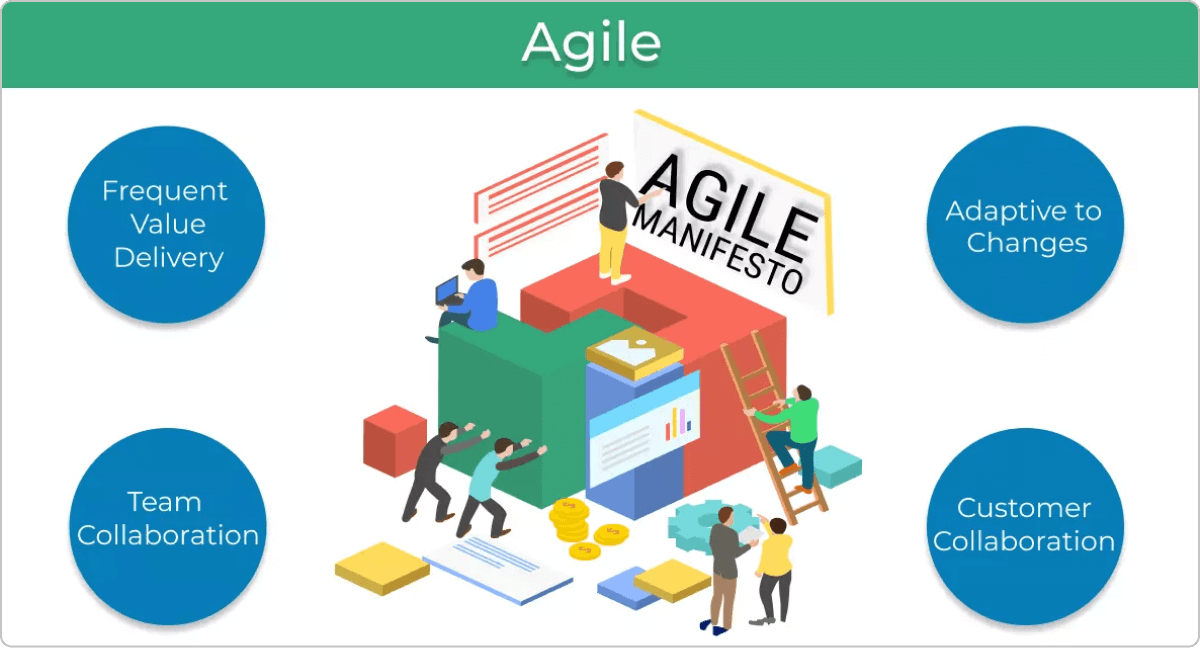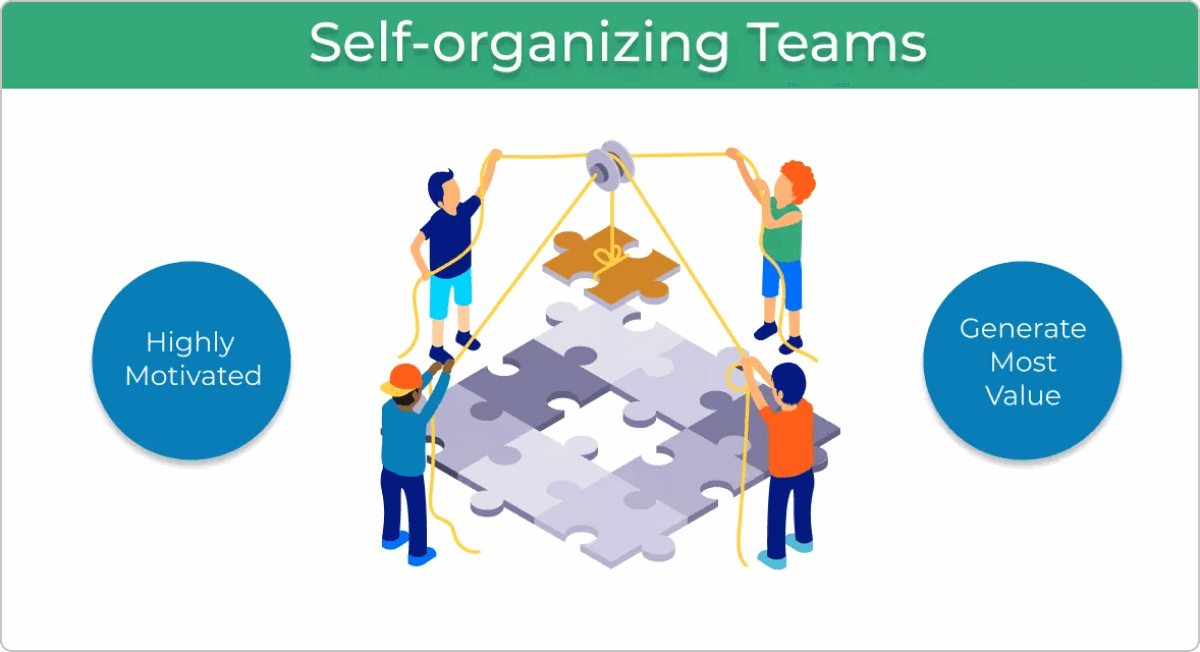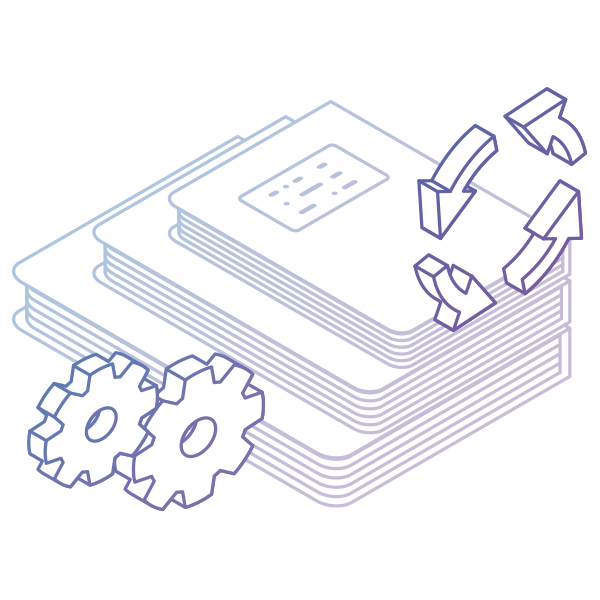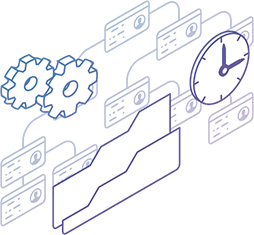From our experience, one of the most confusing concepts in Agile is whether or not Agile is a methodology. We often hear the question, “What Is Agile Methodology?” and our first response will always be, “First, Agile is not a Methodology.”
If you still need clarification about Agile, we will answer this mystery thoroughly.
What Is Agile?
Agile is the philosophy that shapes the predominant Agile approach to managing projects. It was originally outlined in the Agile Manifesto, consisting of 4 core values and 12 principles, which today are the building blocks of the Agile project management method.
Agile emphasizes customer focus, adaptability, and continuous improvement to deliver greater value faster. It encourages open cross-functional communication, regular feedback exchange, and constant knowledge sharing to achieve these results.
 The 4 Agile Manifesto Core Values
The 4 Agile Manifesto Core Values
Understanding the Agile values and principles is a fundamental step toward embracing the Agile mindset (being Agile) and adopting the Agile ways of managing work (doing Agile), or said, in other words doing Agile vs. being Agile.
Whether used in the context of software development or other project management, Agile proclaims the same values: adaptation, collaboration, people, and trust. These values are incorporated in several Agile frameworks and methodologies that help companies create an Agile work environment.
Agile Is a Mindset
Agile is ultimately a mindset that is guided by the principles and values of the Agile Manifesto. They provide guidelines for creating and responding to change and dealing with uncertainty.
Try something that you think might work, get feedback, and make adjustments as needed. Be mindful of the values and principles when doing this. Identify the frameworks, practices, and techniques that best fit your context and help you collaborate with your team.
If Agile Is a Mindset, then What Are Agile Methodologies?
As we have explained, Agile is a mindset, not a method or methodology. But then, how do “Agile methodologies” fit into the mindset of Agile?
Let’s first give a definition of what methodology is in this context. Methodology refers to a set of agreements that a team accepts to follow. Therefore, each team will have its own methodology, which may differ in small or large ways from the methodology of other teams.
Thus, we can say that Agile methodologies are the set of agreements that a team decides to follow in a way that aligns with the Agile values and principles outlined in the Agile Manifesto.
For example, we all know that Kanban is a method and SAFe is a framework. But they were first born as a single team’s methodology and gradually transformed into frameworks ready to be used by other teams.
Which Are the Most Popular Agile Frameworks (Methodologies)?
Among the most popular and widely used Agile frameworks (methodologies) are Kanban, Scrum, SAFe, Extreme Programming (XP), Feature-Driven Development, Lean, and Crystal.
You can read our detailed guide on the different Аgile methodologies.
What Agile Is Not
There are a few misconceptions about Agile that the growing Agile community is still facing today.
Agile Is Not a Methodology
As we have already explained, Agile is a mindset, not a methodology. Thanks to its universal values and principles, the Agile way of thinking is the basis of the Agile methods and frameworks we all use today.
Agile methodologies help us develop the agility to adapt to the changing business environment and deliver high customer value faster.
Agile Does Not Apply to Software Development Only
Initially built out of necessity to deliver value in the software development industry, different aspects of Agile now extend to cross-functional teams and other business units. Besides improving processes and delivery efficiencies, another leading reason for a company-wide Agile adoption is digital transformation. Agile practices allow teams undergoing digital transformation to prioritize work according to the business objectives and measure their completion.
Agile is nowadays contributing to the successful management of knowledge work projects in engineering, pharma, aerospace, and many more industries, markets, and companies of all sizes.
Agile Is Not Scrum
Agile is not Scrum, Kanban, or any other method or framework, for that matter. There’s a false presumption that every Scrum team does Agile project management. While that may be true for many, it is not for numerous others.
Agile and Scrum are very different in nature. Agile is a mindset, a set of values and principles, that lays the ground for many popular frameworks. Scrum, on the other hand, is a methodology that falls under the umbrella of the Agile philosophy.
Agile Only Works on a Small Scale
While Agile works best when implemented in small teams, this doesn’t necessarily mean that it won’t work for larger organizations. On the contrary, what works best is to start with small batches of work in small teams and gradually scale the implementation of Agile to portfolios and within the entire organization.
A critical factor to successfully scaling Agile across your organization is developing a culture where everyone is willing to embrace collaboration and feedback. The Agile values and principles are at the core of that culture, where learning and improving becomes a way of thinking.
Bringing agility to the enterprise has proven to help organizations in their missions to adapt to the market, drive innovation, or gain a competitive edge. There are numerous companies that use agile methodologies, such as Google, Netflix, Vanguard, and BBVA, to name just a few.
Agile vs. Traditional Project Management
Collaboration is the key distinguishing factor between managing a project with an Agile mind and in Waterfall, for instance, or using the traditional project management approach. The Agile philosophy promotes collective input from collaborators, partners, and customers to achieve its goals: deliver faster high-quality value, improve customer satisfaction, and build a company culture of continuous improvement.
This collaboration is encouraged through cross-functional, self-organizing, and openly communicating teams. Unlike the traditional approach, Agile teams produce small deliverables more frequently and seek feedback to adapt swiftly to changing customer requirements.
 Self-organizing Agile teams
Self-organizing Agile teams
Engaging in regular work review cycles is an intrinsic element of what Agile is. It’s how you improve even while the project is still ongoing. Delivering small batches of working solutions opens up feedback loops that teams use to improve. Implementing those improvements continuously helps to create an environment where the focus shifts to delivering outcomes instead of just outputs.
Why Choose Agile Ways of Working?
We can speculate a lot about the advantages of Agile as a philosophy for achieving business agility. However, in the last decade, we have seen a massive shift in many industries from traditional project management to Agile project management.
There are a number of benefits that Agile project management has to offer, and companies are increasingly realizing these benefits:
- Reduced risk of failing to deliver your projects and accumulating high project costs
- Higher chances of meeting customers' expectations
- Metrics for efficiency and data-driven decision-making
- Improved work performance and transparency
- Better team collaboration and continuous improvement
A leading reason for adopting Agile practices is the enhanced ability to manage changing priorities in unpredictable markets. Agile must be well-understood and widely welcomed on all levels within your organization.
For years, we’ve been helping companies of all sizes to adopt agility through building transparency, optimizing processes, and connecting strategy with execution. We are happy to share that experience with you through the following pages!
Enjoy!


 The 4 Agile Manifesto Core Values
The 4 Agile Manifesto Core Values Self-organizing Agile teams
Self-organizing Agile teams


